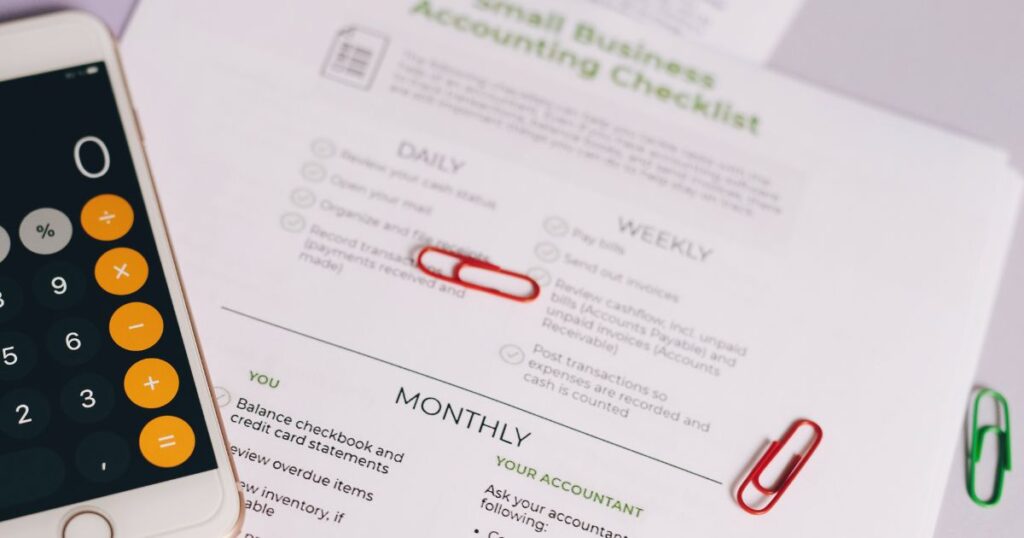What makes the month-end close so tricky? Well, unfinished financial documents and an uncoordinated FP&A team can cause big problems when closing the books at the end of the month.
Closing the books during month-end is really important for any business, but it takes a lot of time. Having a good checklist for this process helps your team work together better and concentrate on important business stuff. It makes sure you have the financial info you need and are set to report it. This is super important for quick decisions and helps your team work towards your company’s long-term goals.
What is the Month- End Close Process?
The month-end closing process is a necessary step in accounting where your team reviews and records all financial activities from the previous month. Different businesses have their own specific tasks for this process, but there are common activities:
- Recording any missed invoices into the system.
- Reconciling credit card and bank accounts.
- Counting inventory and fixing any discrepancies.
- Comparing actual spending with the budget.
- Managing mortgage and insurance records.
- Analyzing data and creating reports for investors and management.
- Closing the accounting period in the company’s software.
The main aim is to produce accurate financial statements for the month.
Importance and Benefits of the Month-End Close Process
The month-end close process helps you keep track of all your business transactions for the month. This is important to make sure your accounting information is correct and complete.
Having accurate monthly data makes other accounting tasks easier. For instance, it simplifies the year-end closing process when you have precise monthly reports to refer to.
The benefits of month-end close include:
- Maintaining accurate and current financial records.
- Enabling small business owners to make better decisions based on their finances.
- Save time on tax filing because your financial statements are well-organized.
- Simplifying audits due to streamlined reports.
- Identifying areas that need improvement in your finances.
Month- End Close Checklist
You know the main steps to follow. Now, you just need a checklist to make sure you have all the necessary data. This checklist will help you gather the required information before the end of the month for your monthly closing.
- Keep Track of Incoming Money
Keep records of all the cash you receive, including payments from clients. Make sure to check invoices and see which ones are paid.
- Monitor Your Spending
Keep an eye on where your company spends money. Use accounting software to automatically track expenses and accounts payable. Review all necessary records and ensure bills are paid and recorded correctly.
- Reconcile Your Accounts Regularly
Match your financial records with those of banks and vendors. If there are discrepancies, check them and make necessary corrections.
- Don’t Overlook Small Expenses
Handle petty cash carefully. Automate the recording of small transactions to avoid errors.
- Gather and Review Financial Documents
Collect important financial statements like balance sheets, general ledger, and profit/loss statements. Use these to create a summary of all your accounts.
- Plan Ahead and Be Proactive
Start planning for your monthly financial close early. Use automation tools where possible, set reporting deadlines, and ensure your finance teams have the necessary resources.
Step-by-Step Process for Month-End Close
There are specific steps that make finishing the month-end close process easier. If you follow these steps, the process becomes very simple.
Step 1: Record Your Money In and Out
Keep a record of all the money your company earns and spends. This includes expenses like the following:
- Insurance
- Payroll
- Payments to suppliers
- Utility bills
- Travel expenses
- Bank loan interests.
It’s also important to keep track of your income such as follows:
- Investment Income
- Sales revenue
- Debt repayments made to your company
- Rental income and the likes
Double-check your records to make sure they’re accurate.
Step 2: Keep Track of What You Owe and What’s Owed to You
Make sure you pay your bills on time and that your customers pay you within the agreed time. Look out for any mistakes in invoices to avoid overpaying or undercharging.
Step 3: Check Your Accounts
Compare your financial records with your bank statements to catch any errors or fraud. Look at your checking and savings accounts, loans, credit accounts, and digital payments like PayPal.
Step 4: Manage Petty Cash
Keep a close eye on small expenses made from your petty cash fund. Reconcile these expenses regularly to avoid discrepancies in your financial reports.
Step 5: Review Your Inventory
Count your inventory and compare it with your records. If there are differences, figure out what went wrong and fix your processes.
Step 6: Monitor Your Long-Term Assets
Keep track of big things your company owns, like buildings and vehicles. Check their condition, record any expenses related to them, and note their depreciation over time.
Step 7: Sort Out Prepaid and Accrued Expenses
Make sure you’re accounting for expenses you’ve paid in advance and money you’re owed but haven’t received yet. Avoid double payments and keep your records accurate.
Step 8: Create Financial Reports
Use all your updated records to create financial statements. These documents show your company’s value, profitability, and cash flow. Have a professional accountant review these statements.
Step 9: Review Your Reports
Have someone who didn’t work on your accounts go through your financial statements and ledger. This fresh set of eyes can catch mistakes you might have missed.
Step 10: Learn and Make Changes
Use your financial reports to learn from your successes and failures. Ask yourself important questions about your company’s future, challenges, and changes you need to make. Use this information to plan for the future and manage your finances wisely.
Conclusion
Ensuring a smooth month-end close process is crucial for any business’s financial stability. With this, any unfinished financial documents and lack of coordination within the FP&A team can lead to significant problems during this crucial period. The month-end close process involves several key steps. By following a structured checklist, and adhering to a step-by-step approach can greatly simplify this process. Accurate financial records not only facilitate better decision-making but also save time on tax filings, simplify audits, and help identify areas for financial improvement. Regular reviews and learning from the data collected enable businesses to adapt, make informed decisions, and work effectively toward their long-term goals.





